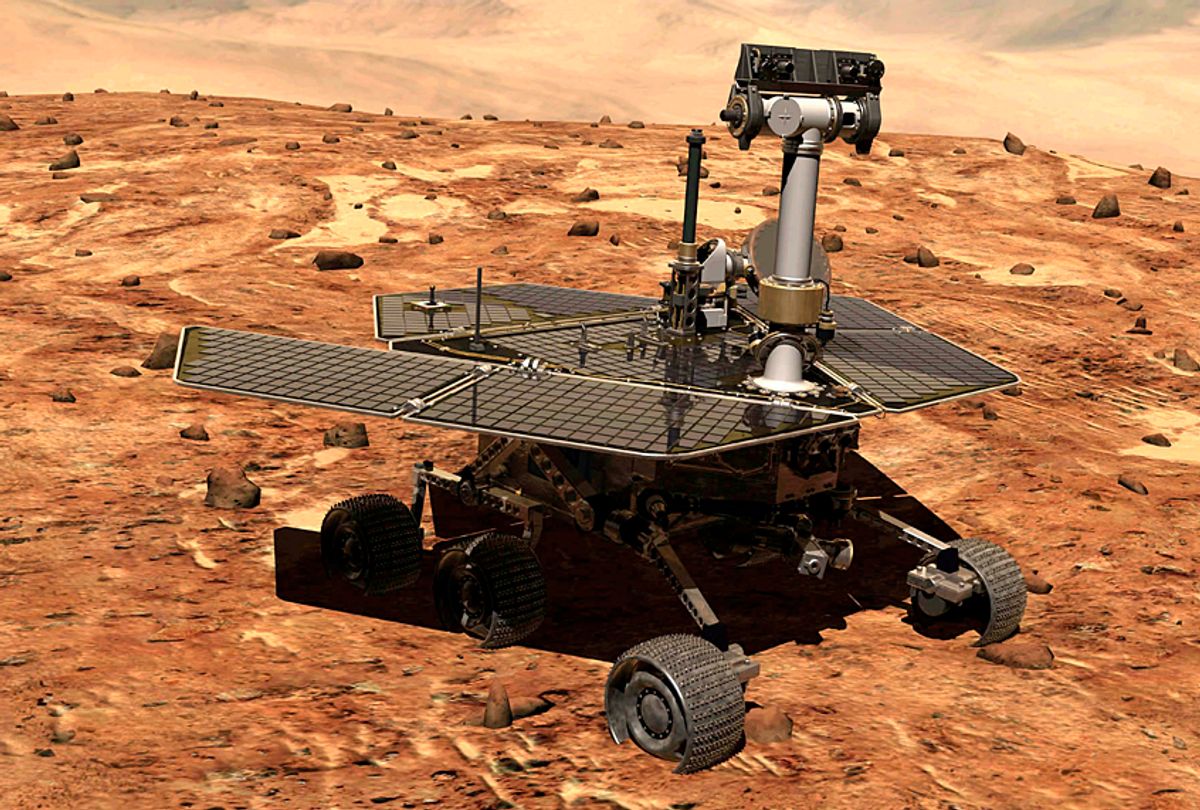In the opening scene of “The Martian,” an astronaut on Mars' surface is knocked unconscious by a massive dust storm. It appears as though life imitates art — yet in this case, the subject threatened by the “thickest dust storm ever absorbed on Mars” (per NASA) is not a real-life astronaut, but a robotic one: the plucky fifteen-year-old Opportunity rover, which along with its now-inoperative identical twin, the Spirit rover, touched down on Mars in January 2004. While Spirit lasted until 2010, and Opportunity has been roving around until today, both have far outlived their planned 90-day mission.
Unlike the car-size Curiosity rover, which is powered by decaying plutonium, Opportunity has a simpler, more tenuous power source: the sun. As anyone with home solar panels knows, solar panels degrade over the years, as do rechargeable batteries like the ones that store energy in the rover.
Now, a massive dust storm — at least by Martian standards — threatens to dim the dwindling amount of light that powers Opportunity. NASA noted that as the storm blotted out the sun, Opportunity’s power supply dropped steadily: from 645 watt-hours, to 345, and finally to merely 22 watt-hours — little more than what a large iPhone’s battery holds.
NASA mission control reports that they have not heard from the rover since June 10, which likely means that it is in low-power mode — an automatic feature designed to preserve the rover’s energy in times of crisis.
The unaffected car-size Curiosity rover took a photo of the ensuing storm that threatens its solar-powered relative. You can see in its photo how much sunlight is blotted out on the red planet — sunlight that means survival for Opportunity.
“How long the tempest lasts will depend on how far it spreads — and how high it lofts Mars’s talcum-powder-like dirt into the atmosphere,” chief scientist Richard Zurek told Nature. “A typical dust storm would dissipate in several weeks, whereas the very largest ones might persist for a few months.”
Opportunity lacks the ability to easily clean its solar panels itself, and is instead reliant on what scientists call “cleaning events” — windy moments that blow dust off the panels. Yet they’re not exactly planned, and the rover’s power supply is instead reliant on whichever way the Martian winds blow — literally.
It’s been 4 days since a signal was heard from Opportunity. But even as some fear that this might be the last gasp of the indomitable rover, NASA is putting a positive spin on it. In a press release, the American space agency noted that they had three satellites orbiting the planet along with Opportunity and Curiosity on the surface. Jim Watzin, the director of the NASA Mars Exploration Program, called it “the ideal storm for Mars science,” saying that scientists had “a historic number of spacecraft operating at the Red Planet... Each offers a unique look at how dust storms form and behave — knowledge that will be essential for future robotic and human missions." NASA also notes that despite the drama of the book and film “The Martian,” Mars’ storms are not nearly as violent as the one depicted in fiction; Mars’ thin atmosphere means even the strongest Martian winds won’t bend any rovers’ antennae.
For Martian meteorology hobbyists, NASA is maintaining a regularly-updated Martian weather website.



Shares